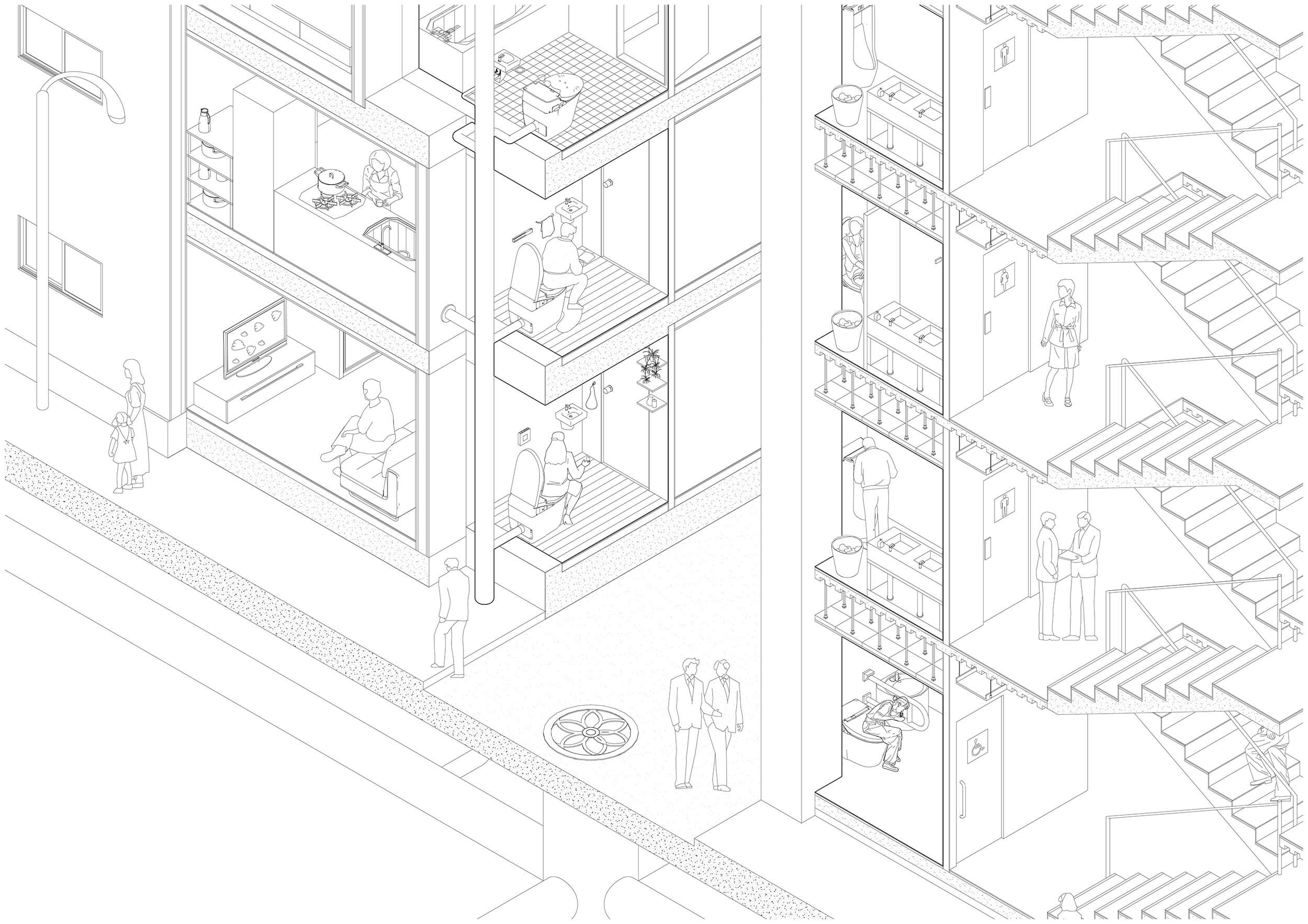The development of the toilet and the treatment of excrement in Japan are closely linked to a growing mechanization of the lavatory as a device and its progressive shift vis-à-vis the house from outdoors to indoors. In the Edo and early Meji Periods toilets were located at the edge of or outside the house. Conceived as a squat-latrine system, made out of wood, it was adapted for the easy collection of the excrement, which was then used as fertilizer. Between the World Wars, new systems, new materials, and even new toilets (for instance toilet bowls) were slowly introduced, while the collection of sewage became more and more mechanized, with basket collection being successively replaced by trucks, then mobile vacuum-extraction units, and later still by a Western type of sewage system with pipes. In recent years the predominant European-based device has become hyper-Japanized, highly automated (including washing, drying, background noise, cleaning, disinfecting, etc.), and even described and praised as something kawaii (cute, adorable) in the public narrative.
Student: Kan Tong
Fire Escape
Open fire-escape stairs are a common and distinguishing feature in multistory buildings in Japan. Their primary purpose—to allow rapid and safe evacuation in case of emergency—seems perfectly inscribed in their position, shape, and materiality, yet the behaviors that take place transcend them by far: be it as a viewing platform accessible to outsiders; be it as an indoor area in high-density urban residences where the inhabitants casually use the stair as an extension of their living space or practice mutually accepted domestic activities; or be it as an ambiguous realm in the house, neither inside nor outside, where intimate, emotional, dramatic, and mysterious events can happen.
